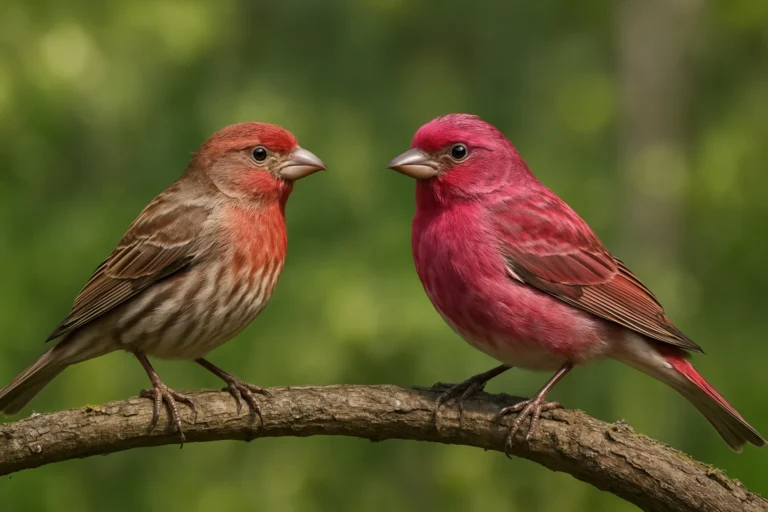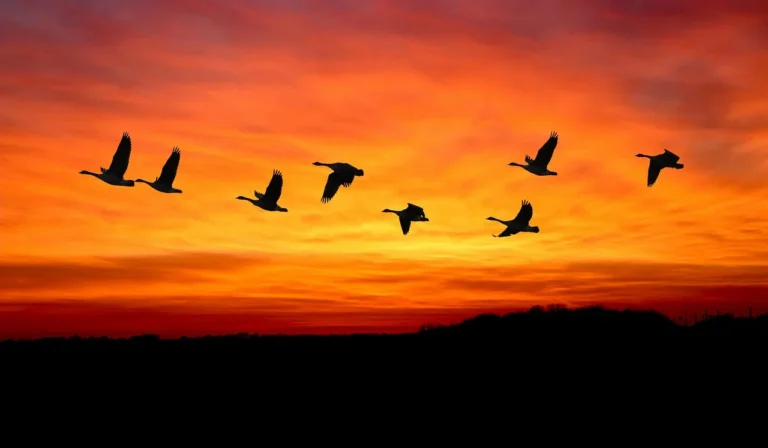Have you ever wondered about bird migration? It’s common for avian enthusiasts and birdwatchers to marvel at how these little creatures navigate thousands of miles with precision. What’s more amazing is that, after a year, they return to the same nesting spots. In fact, bird migration is a marvellous phenomenon, just like a massive avian road trip. Would you believe if we told you that millions of these feathered friends jet-set across continents every single year?
Some birds like the bar-tailed godwit (Limosa lapponica) soar unbelievable lengths without even taking a pit stop. Can you imagine flying that far without snacks or bathroom breaks? That said, these journeys aren’t just impressive. Rather, it can be a risky and exhausting endeavor. Our winged buddies also have to tackle dangers like extreme weather, predation, and even starvation. Still, they migrate.
Today, we’re going to delve deeper into this amazing event and try to answer why birds migrate.
Why Do Birds Migrate? 5 Key Reasons Behind This Phenomenon
Undoubtedly, bird migration is one of the world’s coolest wonders. Avian creatures fly long distances for several reasons, including:
- To Find Food
- To Breed in Safer Environments
- To Escape Harsh Weather
- Instinct and Genetics
- Evolutionary Advantages
Let’s discuss each of the above reasons separately:
To Find Food
When Jack Frost arrives up north, many birds face a serious dinner dilemma! Yummy insects either die off or hide away when temperatures take a nosedive. Those berries birds love? Gone with the frost, while seeds hide under blankets of snow. Barn Swallows (Hirundo rustica) have two options: fly south or go hungry—not much of a choice! Our tiny friends like Ruby-throated Hummingbirds (Archilochus colubris) chase flowering plants southward like flower-loving tourists.
To Breed in Safer Environments
When it comes to raising kids, birds become super picky. Take Arctic Terns (Sterna paradisaea) for example. They are basically champion travelers, flying from Antarctica to the Arctic every year! Why bother with such a marathon journey? Think endless summer days with 24-hour buffets for hungry chicks! Many shorebirds pick the remote Arctic tundra where fewer predators lurk around their vulnerable nests.
To Escape Harsh Weather
Our feathered pals may have fancy feather coats, but extreme cold is still a major no-no. Birds burn through calories like crazy just trying to stay warm in freezing temperatures. Canada Geese (Branta canadensis) say “no thanks” to ice skating when their lakes freeze solid. Some clever species basically follow perfect weather year-round, like retirees with winter homes in Florida.
Instinct and Genetics
Amazingly, migratory birds don’t need Google Maps—they’re born with built-in navigation systems! Young birds often fly solo on their very first migration without any parental guidance. Even Common Cuckoos (Cuculus canorus), raised by completely different bird species, still find Africa like pros! These incredible travelers follow ancient skyways passed down through bird generations for thousands of years.
Evolutionary Advantages
Over countless generations, bird migration evolved because it’s actually a winning life strategy. Migratory birds avoid fighting over the same limited resources all year long. Birds are smart. They move where food is plentiful. The tiny Blackpoll Warbler flies across the Atlantic without stopping once. That’s like us running marathon after marathon with no breaks, food, or sleep. Pretty wild, right? Nature really knows how to amaze us.
How Do Birds Know When and Where to Migrate?
Ever feel restless when seasons change? Birds get that feeling, too, but on a whole other level. Changing daylight hours trigger special hormones that basically scream “It’s travel time!” to birds. Many develop what scientists call “migratory restlessness.” They literally can’t sit still when it’s time to go.
Would you believe birds have actual magnetic compasses in their bodies? It’s true! Special cells containing magnetite help them sense Earth’s magnetic field like a built-in GPS. Some birds, especially our pigeon friends, might even use their super-powered noses to navigate across continents. Many experienced travelers remember landmarks just like we remember road trip stops.
Dangers Birds Face During Migration
To us, birds migrating is a magical phenomenon. Unfortunately, for our avian friends, it’s a risky journey. Our avian friends have to face the following dangers when they’re migrating:
Severe Weather Conditions
Unexpected storms can blow our feathered travelers hundreds of miles off their planned route. Heavy rain or thick fog turns bird navigation into a nightmare scenario for many species. Sudden cold fronts might actually freeze birds mid-flight if they can’t find shelter quickly. With climate change messing with weather patterns, migration has become even more unpredictable and dangerous.
Getting Lost
City lights create a confusing sea of stars for nighttime travelers trying to navigate. Tall buildings, radio towers, and other human structures become deadly obstacles in migration pathways. Deforestation removes vital landmark references that birds have used for countless generations to stay on track. Many exhausted birds crash into brightly lit buildings while making their way through cities at night.
Predation
Birds stopping for quick rest breaks become easy targets for hungry predators waiting below. Hawks and falcons are basically highway bandits targeting tired travelers along migration routes. Water birds face surprise attacks from fish below when they land for a break. Birds of prey like Peregrine Falcons (Falco peregrinus) know exactly where to set up their ambushes.
Starvation and Exhaustion
Can you imagine losing half your body weight during one exercise session? Many birds do exactly that. Some tiny songbirds become flying fuel tanks, doubling their weight before attempting their long journeys. The incredible Bar-tailed Godwit (Limosa lapponica) flies over 7,000 miles without a single snack break. Finding good “refueling” stops along migration routes can literally mean life or death.
Human Interference
We humans have removed many crucial pit stops where birds once rested and refueled. Hunting still threatens many migratory birds in certain areas along their extensive travel routes. Wind turbines and communication towers cause millions of unfortunate bird deaths each year. Climate change messes with the timing of seasonal food sources that birds depend on during their journeys.
How Humans Can Help Migrating Birds
Why not turn your backyard into a bird-friendly rest stop with native plants? Even small gardens can become lifesaving sanctuaries for tired winged travelers between destinations. Support wildlife conservation efforts that protect important bird habitats and crucial migration corridors. During peak migration seasons, turn off unnecessary outdoor lighting to help birds navigate safely.
Share your passion for bird migration with everyone around you—knowledge is powerful. Join citizen science projects that track bird movements throughout different seasons of the year. Annual bird counts help scientists understand population trends and identify species in trouble. Consider installing nest boxes for bluebirds, swallows, and wood ducks in your yard.
The Big Picture of Bird Migration
Bird migration remains one of nature’s most jaw-dropping spectacles and fascinating bird behaviors. These amazing journeys combine perfect timing, athletic superpowers, and navigation skills that would make GPS inventors jealous. Birds have perfected these incredible abilities over millions of years just to survive and thrive. Why do birds migrate? Because this remarkable strategy gives them the best shot at life.
If you’re fascinated by the incredible world of birds, keep visiting our blog for more insights, tips, and stories that bring you closer to our feathered friends.


